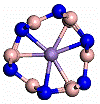Department of Physics and Astronomy: Publications and Other Research

Stephen Ducharme Publications
ORCID IDs
Document Type
Article
Date of this Version
8-2016
Citation
Nature Communications 7 12316(10) (2016).
doi: 10.1038/ncomms12316
Abstract
Exploring the abundant resources in the ocean requires underwater acoustic detectors with a high-sensitivity reception of low-frequency sound from greater distances and zero reflections. Here we address both challenges by integrating an easily deformable network of metal nanoparticles in a hydrogel matrix for use as a cavity-free microphone. Since metal nanoparticles can be densely implanted as inclusions, and can even be arranged in coherent arrays, this microphone can detect static loads and air breezes from different angles, as well as underwater acoustic signals from 20 Hz to 3 kHz at amplitudes as low as 4 Pa. Unlike dielectric capacitors or cavity-based microphones that respond to stimuli by deforming the device in thickness directions, this hydrogel device responds with a transient modulation of electric double layers, resulting in an extraordinary sensitivity (217 nF kPa–1 or 24 μCN–1 at a bias of 1.0 V) without using any signal amplification tools.


Comments
Copyright © 2016 Yang Gao, Jingfeng Song, Shumin Li, Christian Elowsky, You Zhou, Stephen Ducharme, Yongmei Chen, Qin Zhou, and Li Tan. Published by Nature Publishing Group.
This work is licensed under a Creative Commons Attribution 4.0 International License.